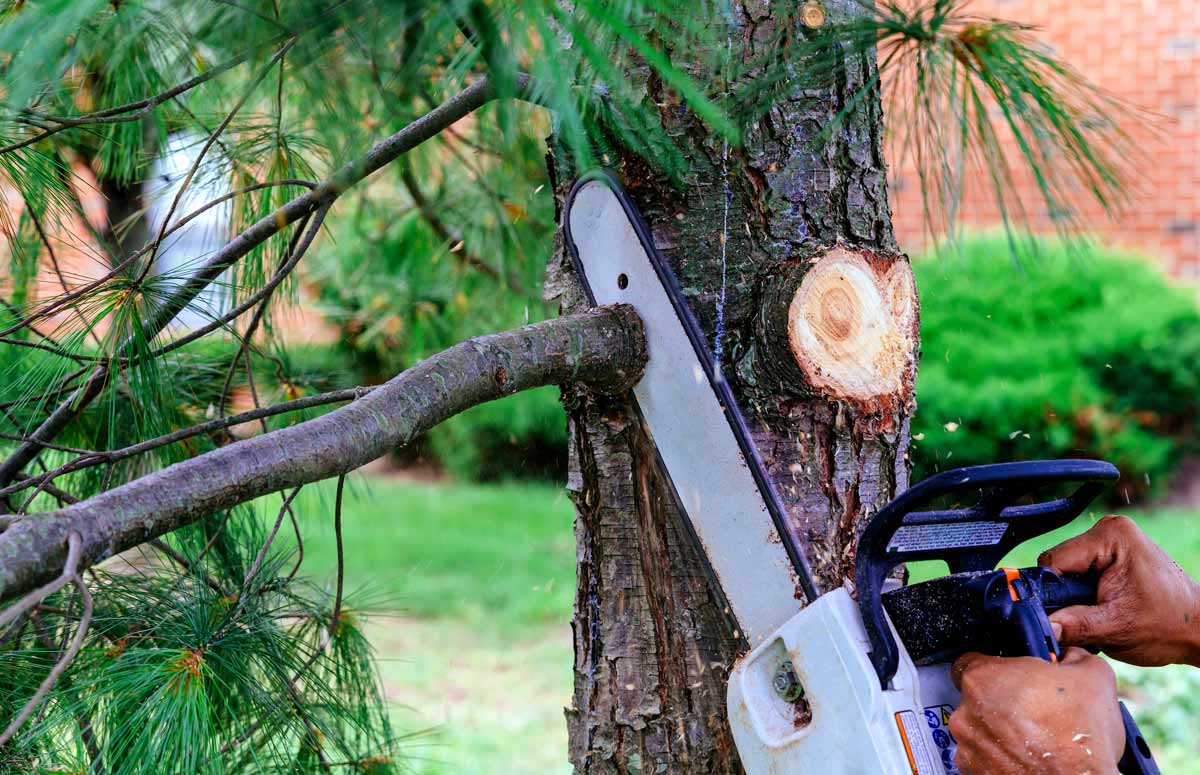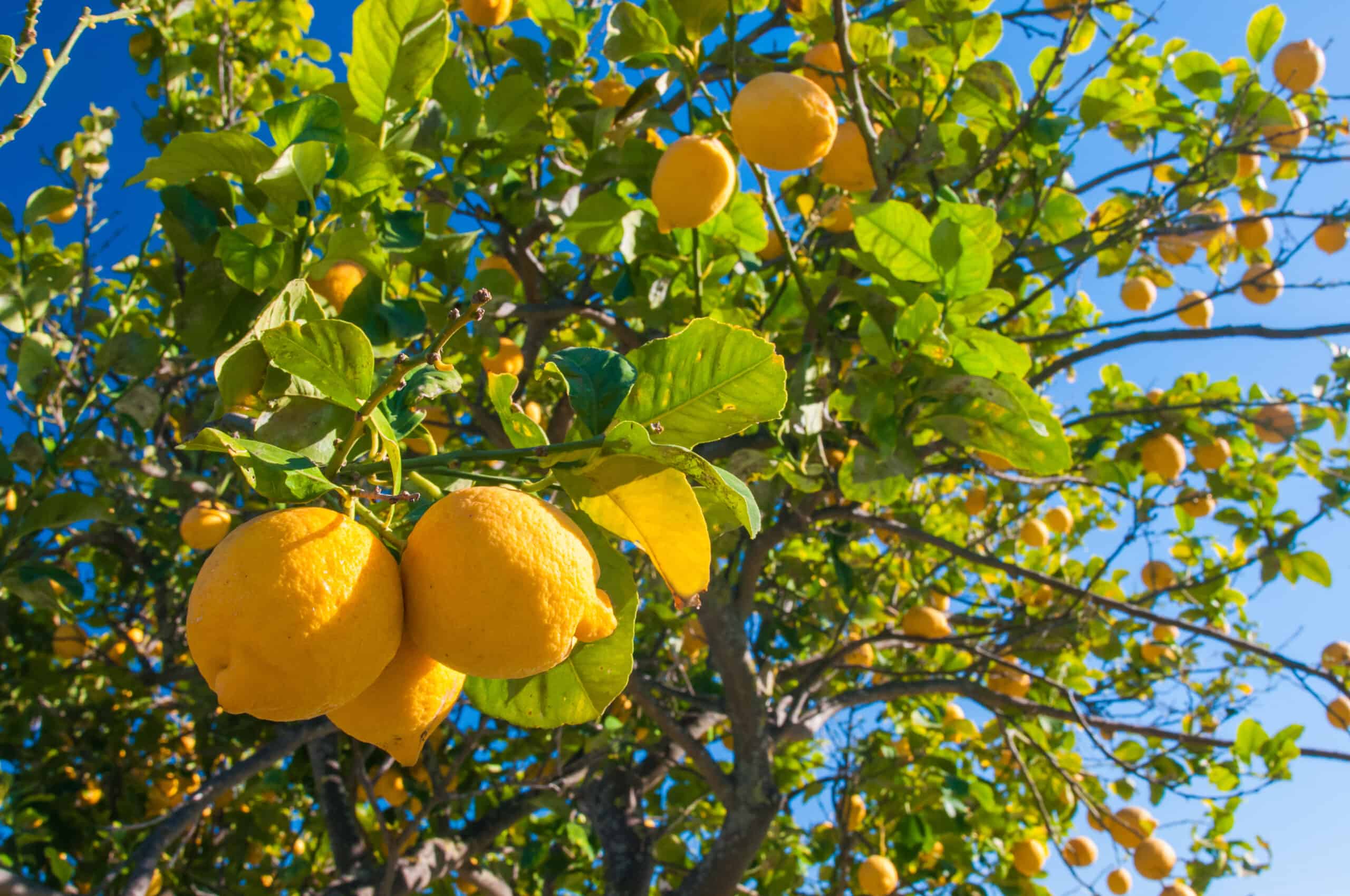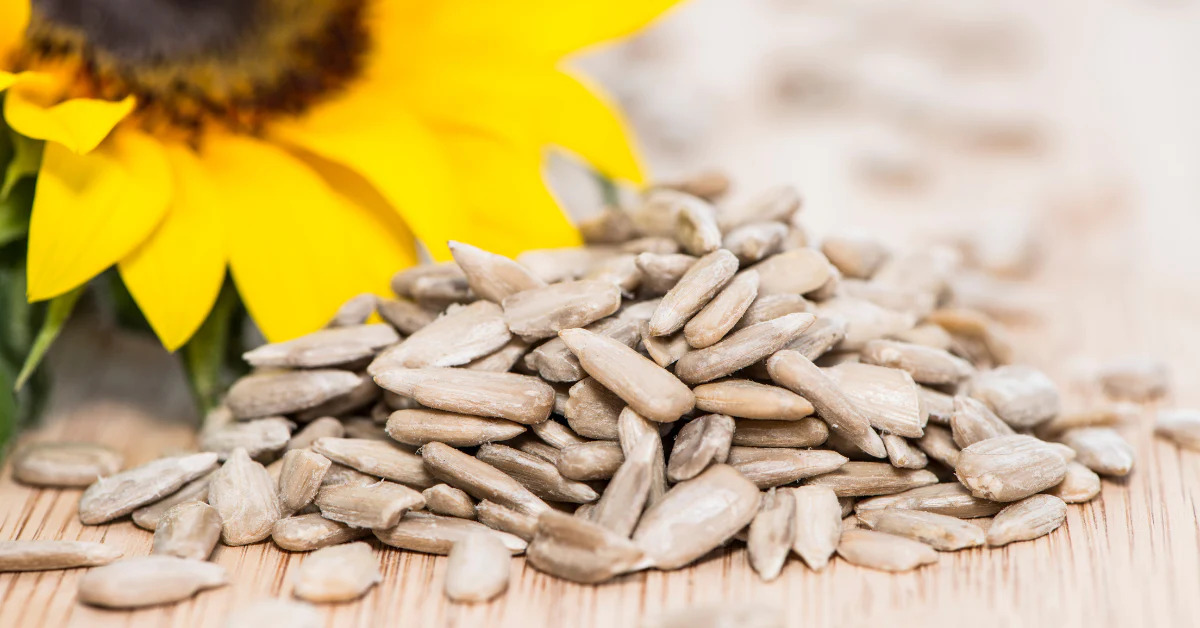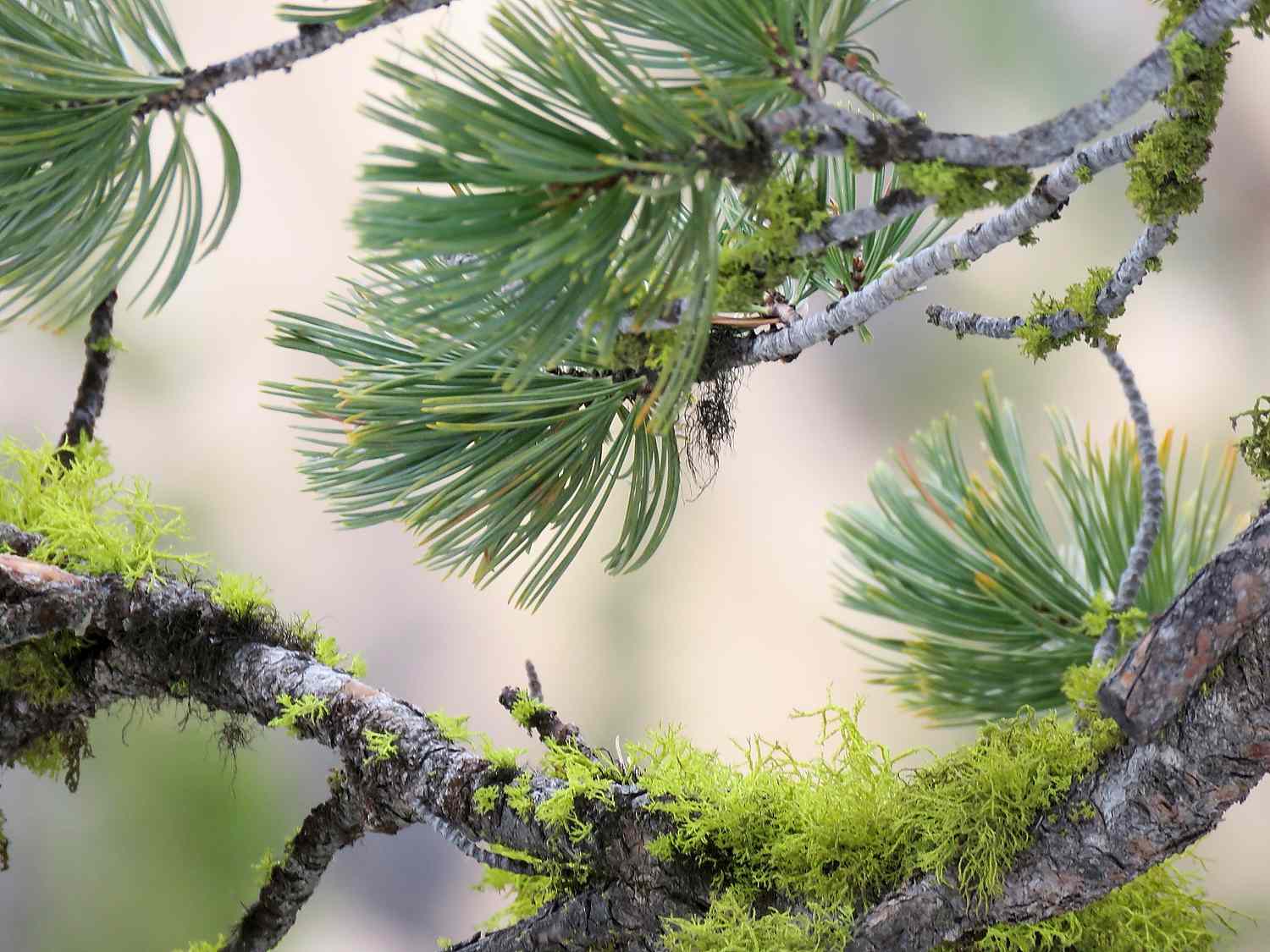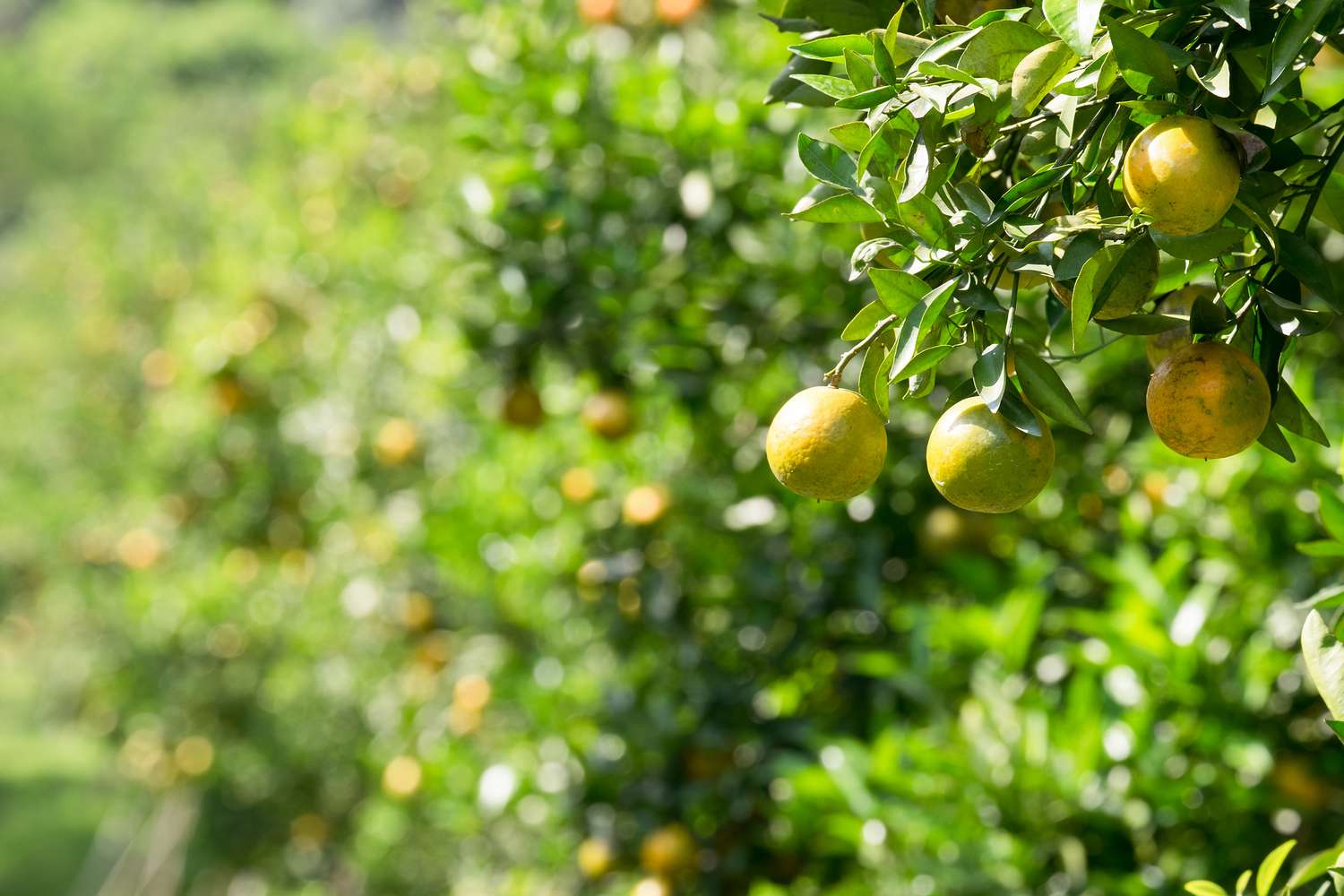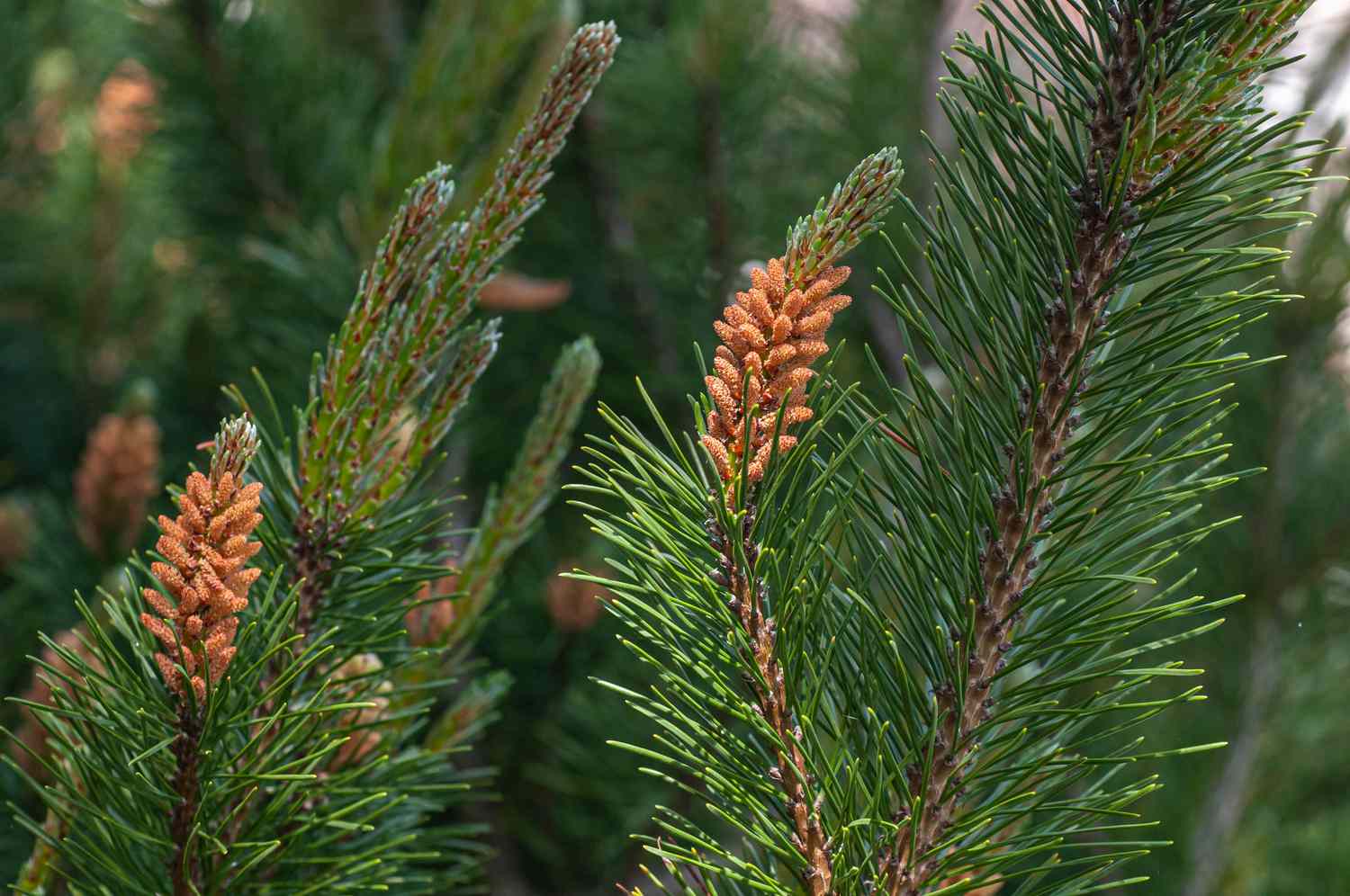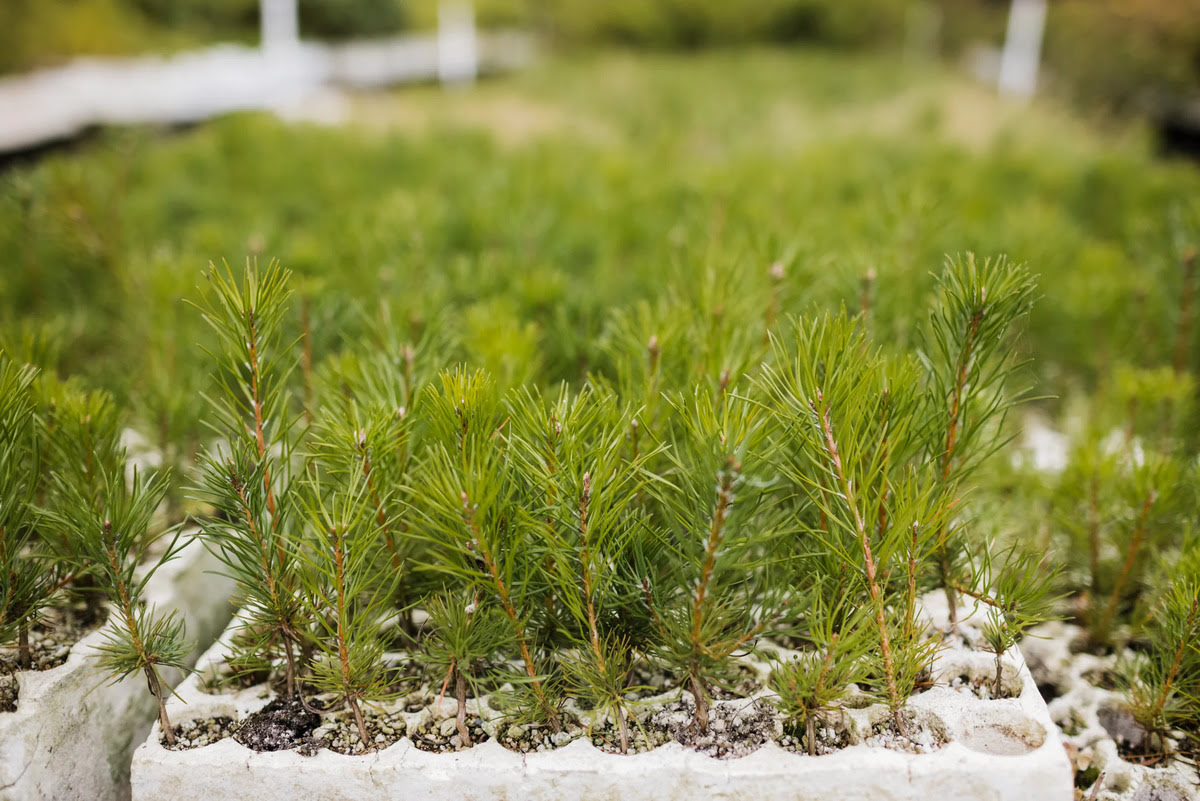Home>Gardening News and Trends>Latest News>How Often Do Pine Trees Produce Pine Cones
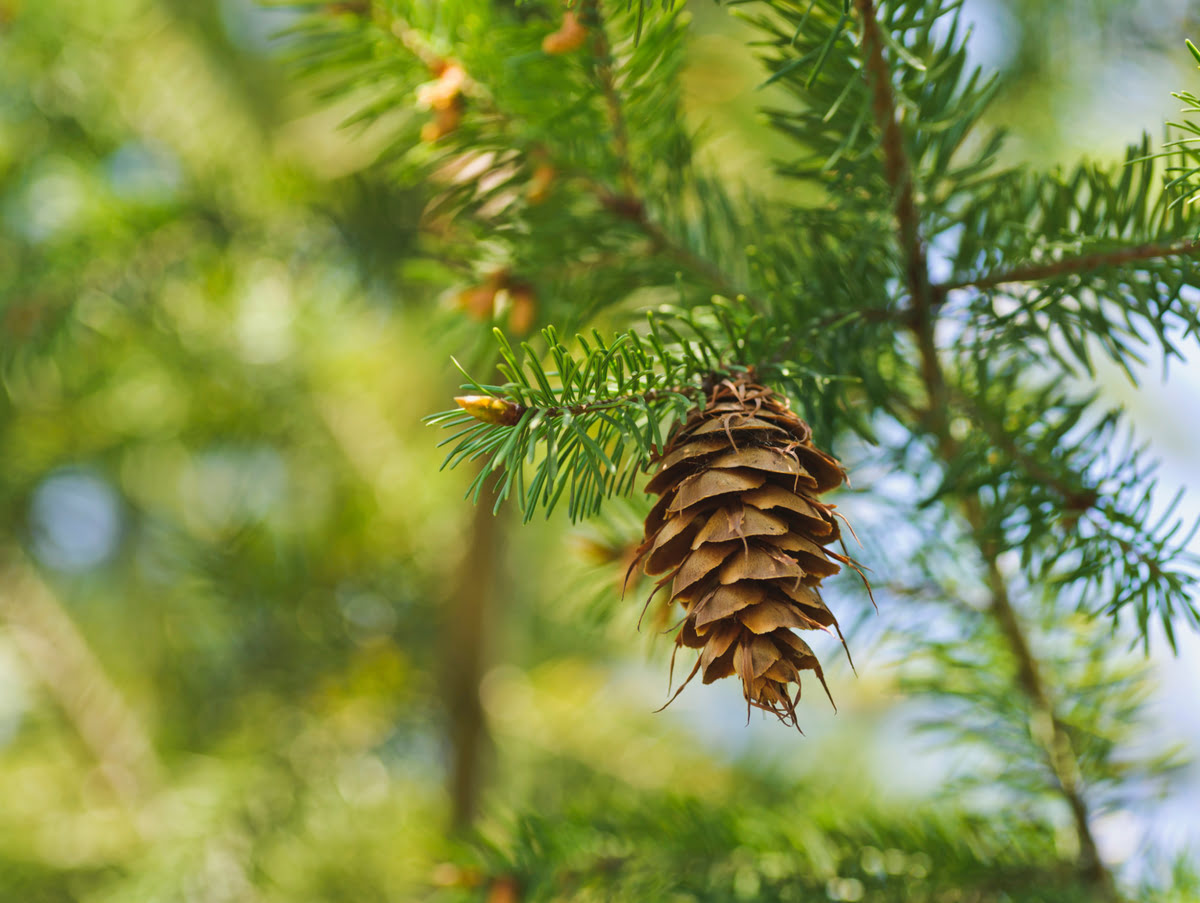

Latest News
How Often Do Pine Trees Produce Pine Cones
Modified: January 22, 2024
Stay updated with the latest news on pine trees and their cone production frequency. Discover how often pine trees produce cones and stay informed.
(Many of the links in this article redirect to a specific reviewed product. Your purchase of these products through affiliate links helps to generate commission for Chicagolandgardening.com, at no extra cost. Learn more)
Table of Contents
- Introduction
- What are Pine Cones?
- The Life Cycle of Pine Trees
- Factors Affecting Pine Cone Production
- Environmental Conditions for Pine Cone Production
- Differences in Pine Cone Production among Pine Tree Species
- Timing and Frequency of Pine Cone Production
- Significance of Pine Cone Production for Pine Trees
- Human Uses and Impacts on Pine Cone Production
- Conclusion
Introduction
Welcome to the fascinating world of pine trees and their remarkable reproductive structures known as pine cones. These coniferous evergreens have long captured the imagination of nature lovers and scientists alike, with their majestic stature and distinctive cone-shaped fruits. In this article, we will delve into the intriguing process of pine cone production, exploring the factors influencing their frequency and shedding light on their significance to the survival of pine trees.
Pine cones are woody structures that serve as the reproductive organs of pine trees. While they are often associated with holiday decorations and crafts, their primary function is to facilitate the dispersal of pine tree seeds. Each cone contains scales that house the seeds, protecting them until they are ready to be released into the environment.
The life cycle of a pine tree involves a complex and fascinating interplay of environmental factors, biological processes, and timing. Understanding the mechanisms behind pine cone production provides valuable insights into the reproductive strategies of these resilient trees.
In this article, we will delve into the environmental conditions that influence pine cone production, explore variations among different pine tree species, and highlight the significance of pine cone production for the survival and proliferation of pine trees. We will also examine the impact of human activities on pine cone production and discuss the uses of pine cones in various industries.
So, let’s embark on this enlightening journey to discover the secrets of pine cone production and gain a deeper appreciation for the incredible adaptations that enable pine trees to reproduce and thrive in diverse ecosystems.
What are Pine Cones?
Pine cones are reproductive structures found on pine trees, and their unique appearance is instantly recognizable. They consist of overlapping scales arranged in a spiral formation around a central axis, with each scale containing one or more seeds. These woody structures vary in size, shape, and color, depending on the species of pine tree.
The primary function of pine cones is to produce and protect seeds, which are essential for the propagation and survival of pine trees. They play a crucial role in the reproductive process by ensuring the dispersal of seeds over long distances, increasing the chances of successful germination and establishment of new pine trees.
The scales of pine cones are densely packed, providing a protective barrier for the seeds against harsh environmental conditions and predators. They also contain resin, a sticky substance that further protects the seeds from moisture and insect damage.
Pine cones have a fascinating life cycle that spans several years. During the first year, also known as the immature stage, female cones are formed on the upper branches of a pine tree. These cones remain closed and develop over the course of several months.
As the second year approaches, the male cones develop and produce pollen, which is wind-borne to the female cones. Fertilization occurs when the pollen comes into contact with the receptive female cones, leading to the formation of viable seeds.
In subsequent years, the pine cones slowly mature and change in appearance. The scales of the cone open up, allowing for the dispersal of seeds. This process is often triggered by environmental cues, such as changes in temperature or moisture levels.
Upon reaching maturity, the pine cones release their seeds through various mechanisms. Some pine cones disintegrate, while others rely on the wind or animals for seed dispersal. Once the seeds are successfully dispersed, they can take root and begin the process of growing into new pine trees.
Overall, pine cones serve as an essential component of the reproductive cycle of pine trees. They not only ensure the survival and spread of the species but also provide a fascinating glimpse into the intricate mechanisms of nature’s reproductive strategies.
The Life Cycle of Pine Trees
The life cycle of pine trees is a remarkable process that spans several years and involves various stages of growth and reproduction. Understanding this life cycle provides valuable insights into the development and survival of these majestic coniferous trees.
Like all trees, the life cycle of a pine tree begins with the germination of a seed. Pine cones serve as the reproductive structures that produce and protect these seeds.
During the immature stage of the pine cone, which typically lasts the first year, the female cones develop on the upper branches of the tree. These cones remain closed and gradually grow larger as they prepare for fertilization.
In the following year, the male cones develop and produce pollen, tiny grains that contain the male reproductive cells. The wind plays a crucial role in carrying the pollen to the female cones, where fertilization occurs.
Once fertilization takes place, the cones continue to mature. The scales of the cone begin to open, allowing for the dispersal of seeds. This process can take several years, with cones from different years at various stages of development on the same tree.
Environmental cues, such as changes in temperature or moisture levels, often influence the timing of seed dispersal. Once the pine cones have reached maturity, they release their seeds using various mechanisms, such as disintegration, wind dispersal, or animal dispersal.
The released seeds have the potential to grow into new pine trees. However, not all seeds have an equal chance of survival. Many factors, including competition for resources, predation, and environmental conditions, determine whether a seed will successfully germinate and establish itself as a young pine tree.
As the young pine tree grows, it undergoes a series of growth stages. Initially, it develops a taproot, anchoring it in the soil and providing stability. Then, it begins to produce above-ground shoots, called saplings, that will eventually grow into the trunk and branches of a mature pine tree.
Throughout its life, the pine tree continues to grow and produce new branches and foliage. It reaches its reproductive stage when it has acquired sufficient size and energy reserves.
As the pine tree matures, it begins to produce its own pine cones, completing the reproductive cycle. These cones will continue the life cycle by producing new seeds to ensure the survival and spread of the species.
The life cycle of a pine tree is a beautifully orchestrated process that combines biological and environmental factors to ensure the survival of these magnificent trees. By understanding this cycle, we can gain a deeper appreciation for the complexity and resilience of pine trees in their natural habitats.
Factors Affecting Pine Cone Production
Pine cone production is influenced by a variety of factors that can either promote or hinder the development and abundance of these reproductive structures. Understanding these factors is crucial for assessing the health and reproductive capacity of pine tree populations.
One of the primary factors influencing pine cone production is age. Pine trees generally reach reproductive maturity when they are between 10 and 30 years old, depending on the species. Young trees may produce fewer cones or skip cone production altogether until they have reached this stage of maturity.
Environmental conditions play a significant role in determining the frequency and abundance of pine cone production. Adequate sunlight, soil nutrients, and moisture are essential for pine trees to allocate resources towards developing and sustaining cones.
Temperature is another critical factor. Many pine trees rely on the alternation of warm summers and cold winters to trigger the production and release of cones. Cold temperatures often facilitate the opening of cones and the dispersal of seeds, while warm temperatures promote pollination and seed development.
Drought conditions can have a significant impact on pine cone production. In periods of prolonged drought, pine trees may prioritize survival and conserve resources by reducing or even halting cone production. This adaptive response ensures the tree’s chances of survival by allocating resources towards maintaining its own health rather than reproduction.
Some pine tree species exhibit a phenomenon called masting, where they produce a crop of cones at irregular intervals. This irregular pattern can span several years, with some years having an abundance of cones while others have very few. Masting is thought to be an adaptive strategy that helps to overwhelm seed predators and enhance the chances of successful seed dispersal and establishment.
The availability of pollinators is also critical for pine cone production. Wind-pollinated pine trees do not rely on specific pollinators, while others depend on insects, such as beetles or bees, for successful pollination. Changes in pollinator populations can affect the rate of pollen transfer and, in turn, influence cone production.
Furthermore, genetic factors within a particular pine tree population can influence cone production. Some individual trees may naturally produce more cones than others due to genetic variations that affect reproductive fitness.
Overall, a combination of age, environmental conditions, temperature, drought, masting behavior, pollinators, and genetic factors collectively shape the rate and intensity of pine cone production. By studying and understanding these factors, researchers and conservationists can gain valuable insights into the reproductive success and overall health of pine tree populations.
Environmental Conditions for Pine Cone Production
Pine cone production is heavily influenced by the environmental conditions in which pine trees grow. These conditions play a significant role in determining the frequency, abundance, and timing of pine cone development.
One crucial environmental factor is sunlight. Pine trees require ample sunlight to carry out the process of photosynthesis, which produces the energy necessary for growth and reproduction. Trees that are shaded by neighboring vegetation may experience reduced cone production due to limited access to sunlight.
Soil nutrients are another essential component. Pine trees thrive in well-drained soils that are rich in organic matter. Adequate nutrient availability, especially phosphorus and potassium, is necessary for the development of healthy cones. Nutrient deficiencies can lead to stunted cone growth and reduced reproductive output.
Moisture levels also play a crucial role in pine cone production. The availability of water affects the metabolic activity of pine trees, including the development and maturation of cones. Insufficient moisture can lead to cone abortion or poor seed development.
The timing and duration of rainfall or irrigation are important factors as well. Pine trees often rely on specific patterns of precipitation to trigger cone development and subsequent seed dispersal. Drought conditions, especially during critical stages of cone development, can severely impact cone production.
Temperature fluctuations are also key environmental factors affecting pine cone production. Different pine species have specific temperature requirements for cone development. For example, some pine trees need a period of cold temperatures, known as stratification, to break the dormancy of the seeds within the cones. Warmer temperatures then promote pollination and seed development.
Environmental disturbances, such as wildfires or windstorms, can have both short-term and long-term effects on pine cone production. While some species of pine trees are adapted to regenerate and produce cones after fire events, severe disturbances may temporarily disrupt cone production and seed availability.
Furthermore, altitude and latitude can influence pine cone production. Pine trees growing at higher elevations or in more northern latitudes may have shorter growing seasons, limiting the time available for cone production. These trees often produce smaller and fewer cones as a result.
Overall, the environmental conditions surrounding a pine tree population have a significant impact on pine cone production. Sunlight, nutrient availability, moisture levels, temperature fluctuations, environmental disturbances, and geographical factors all contribute to the successful development, maturation, and release of cones. By understanding and managing these environmental conditions, we can help ensure optimal pine cone production and the continued survival of these magnificent trees.
Differences in Pine Cone Production among Pine Tree Species
Pine trees encompass a diverse group of species, each with its own unique characteristics, including variations in pine cone production. While all pine trees produce cones as part of their reproductive cycle, there are significant differences among species in terms of cone size, shape, frequency, and other defining traits.
One notable difference among pine tree species is the size of their cones. Some species, such as the giant sequoia (Sequoiadendron giganteum), produce cones that can reach impressive sizes, often exceeding the size of most other pine tree cones. On the other hand, some species, like the lodgepole pine (Pinus contorta), produce smaller cones that are rarely larger than a few centimeters in length.
Another variation is the shape of pine cones. Some species, including the white pine (Pinus strobus), have elongated cones with distinct serrated scales, while others, like the longleaf pine (Pinus palustris), have short and rounded cones. These variations in shape are believed to be adaptations that aid in seed dispersal and protection.
The frequency of pine cone production also varies among species. Some pine trees, known as “prolific cone bearers,” produce cones nearly every year. Examples of these species include the ponderosa pine (Pinus ponderosa) and the red pine (Pinus resinosa), which consistently produce abundant cones. In contrast, other species, termed “intermittent cone bearers,” have sporadic cone production. This means that they may produce a large crop of cones every few years while producing very few or no cones in between. The jack pine (Pinus banksiana) is a classic example of an intermittent cone bearer.
Furthermore, the timing of cone production can differ among species. Some pine trees produce cones in the spring, while others do so in the summer or fall. For instance, the Eastern white pine (Pinus strobus) produces cones in the spring, often coinciding with its release of pollen. In contrast, the loblolly pine (Pinus taeda) produces cones in the late summer or early fall.
Additionally, the colors of pine cones vary among species. While most pine cones are brown or tan, some species produce cones with vibrant or unique hues. For example, the Coulter pine (Pinus coulteri) produces cones with a distinct yellow-green coloration, making them visually striking.
The differences in pine cone production among species have ecological significance. The size, shape, and timing of cone production can influence seed dispersal mechanisms and strategies employed by different species. These variations also affect the ability of pine trees to reproduce, adapt to environmental conditions, and colonize diverse habitats.
Understanding these differences in pine cone production among species allows us to appreciate the remarkable diversity within the pine family and sheds light on the evolutionary adaptations that have shaped the reproductive strategies of these trees.
Timing and Frequency of Pine Cone Production
The timing and frequency of pine cone production vary among different species of pine trees and can be influenced by various factors, including environmental conditions and biological traits. Understanding the patterns of cone production is crucial for assessing the reproductive strategies and life cycles of these remarkable trees.
The timing of cone production is determined by both genetic and environmental factors. Some pine tree species have specific periods of the year when they produce cones, while others exhibit less rigid timing. For example, the eastern white pine (Pinus strobus) typically produces cones in the spring, while the Douglas fir (Pseudotsuga menziesii) produces cones in late summer or fall.
In addition to genetic factors, environmental conditions play a significant role in determining the timing of cone production. Factors such as temperature, moisture, and day length can influence the development and maturation of cones. Temperature fluctuations, particularly the alternation of warm summers and cold winters, often serve as triggers for the initiation of cone development and subsequent seed dispersal.
The frequency of pine cone production can vary widely among species and even within populations of the same species. Some pine trees are known as “prolific cone bearers,” producing cones on an annual or near-annual basis. These species, such as the lodgepole pine (Pinus contorta) and the ponderosa pine (Pinus ponderosa), consistently produce abundant cones year after year.
In contrast, other pine trees are considered “intermittent cone bearers.” These species produce cones in irregular cycles, with years of heavy cone crops followed by years of limited or no cone production. This phenomenon, known as masting, is thought to be an adaptive strategy that helps to overwhelm seed predators and maximize the potential for successful seed dispersal and survival. The red pine (Pinus resinosa) and jack pine (Pinus banksiana) are examples of intermittent cone bearers.
The frequency of cone production can also be influenced by the age of the pine tree. Young trees may produce fewer cones or skip cone production altogether until they have reached reproductive maturity, which generally occurs around 10-30 years of age, depending on the species.
Overall, the timing and frequency of pine cone production are influenced by a combination of genetic and environmental factors. By studying these patterns, researchers can gain insights into the reproductive strategies of different pine tree species and better understand the mechanisms that drive cone production and seed dispersal.
Significance of Pine Cone Production for Pine Trees
Pine cone production plays a vital role in the life cycle and survival of pine trees. These remarkable structures serve as the reproductive organs of the trees, ensuring the dispersal of seeds and the continuation of their species. The significance of pine cone production for pine trees can be observed across various aspects of their ecology and adaptation.
One key significance of pine cone production is the facilitation of seed dispersal. Pine cones house and protect the seeds until they are mature and ready to be released into the surrounding environment. Through various mechanisms, such as wind dispersal or animal-mediated dispersal, pine cones maximize the chances of seed dispersal over long distances. This allows for the colonization of new habitats and helps pine trees maintain genetic diversity.
Pine cone production is also crucial for the survival and establishment of offspring. Pine trees invest significant energy and resources into the development of cones, ensuring the production of viable seeds. This investment allows the next generation of pine trees to germinate and grow, maintaining the continuity of the species.
Furthermore, the timing of cone production can play a significant role in the reproductive success of pine trees. By synchronizing cone development with favorable environmental conditions, pine trees increase the likelihood of successful pollination and seed production. This adaptation allows them to optimize resource allocation and reproductive fitness.
Pine cone production also affects the ecological dynamics of forests. The abundance of cones can have cascading effects on the populations of seed-eating animals, such as squirrels and birds, which rely on the seeds as a food source. Moreover, masting behavior, where pine trees produce large crops of cones in sporadic cycles, helps to regulate seed predator populations. This strategy reduces the impact of seed predation during years of low cone production and enhances the chances of successful seed dispersal during years of abundant cone crops.
Additionally, cone production can influence the competitive dynamics within a pine tree population. Trees that produce more cones have a higher chance of dispersing their seeds to colonize new areas and establish themselves in advantageous habitats. This aspect of cone production contributes to the overall resilience and adaptability of pine trees.
In summary, the significance of pine cone production for pine trees is multifaceted. From ensuring seed dispersal and promoting genetic diversity to supporting the growth and survival of offspring, cone production plays a vital role in the reproductive success and adaptation of these magnificent trees. Understanding the significance of cone production aids in the conservation and management of pine tree populations and allows us to appreciate the intricate strategies employed by nature to ensure the continued survival of these iconic plants.
Human Uses and Impacts on Pine Cone Production
Pine cones have been utilized by humans for various purposes throughout history. From their decorative value to their economic importance, human activities have both positive and negative impacts on pine cone production and the overall health of pine tree populations.
One of the most well-known uses of pine cones is in the realm of arts and crafts. They are often collected and used as decorations during the holiday season, creating a festive atmosphere in homes and public spaces. Their unique shapes and textures make them a popular choice for creating wreaths, centerpieces, and other ornamental crafts.
Moreover, pine cones have economic significance in certain industries. They are used in the production of potpourri, essential oils, and scented products, adding a natural touch and pleasant aroma. Pine cone seeds are also valuable commodities in the forestry and horticulture sectors, where they are used for reforestation efforts or as a source of propagation material for pine trees.
However, human activities can also have negative impacts on pine cone production and pine tree populations. Deforestation, particularly through clear-cutting practices, can result in the destruction of pine tree habitats and the loss of their reproductive structures. This leads to a decline in cone production and negatively impacts the genetic diversity of pine tree populations.
Additionally, pollution, habitat fragmentation, and climate change have adverse effects on pine cone production. Air pollution can impair the reproductive processes of pine trees, affecting seed development and overall cone production. Habitat fragmentation, caused by urbanization and land development, can disrupt pollinator populations and hinder pollination, leading to reduced cone production.
Climate change poses a significant threat to pine cone production. Alterations in temperature and precipitation patterns can disrupt the synchrony between cone production and optimal environmental conditions, affecting seed development and dispersal. Drought conditions can also lead to reduced cone production or cone abortion, affecting the regeneration and survival of pine tree populations.
It is worth noting that conservation efforts and sustainable management practices can help mitigate the negative impacts of human activities on pine cone production. Protecting and restoring natural habitats, implementing sustainable harvesting practices, and reducing pollution can all contribute to the preservation of pine tree populations and their reproductive success.
Overall, human uses of pine cones have both positive and negative impacts on cone production and pine tree populations. While they provide aesthetic and economic value, human activities can also pose threats to the health and viability of pine trees. By promoting conservation and adopting sustainable practices, we can ensure the continued availability and sustainability of pine cone resources for future generations.
Conclusion
Throughout this exploration of pine cone production and its significance for pine trees, we have gained a deeper understanding of the intricate reproductive strategies and ecological resilience exhibited by these remarkable trees. From the unique structure and function of pine cones to the various factors influencing their development, pine cone production plays a vital role in the life cycle and survival of pine trees.
Pine cones serve as the reproductive organs of pine trees, ensuring the dispersal of seeds and the colonization of new habitats. Environmental conditions, such as sunlight, soil nutrients, moisture, and temperature, all play crucial roles in determining the timing, frequency, and abundance of cone production. Genetic factors, masting behavior, and pollinator availability further shape the patterns of cone development and seed dispersal.
The timing and frequency of cone production vary among different pine tree species. Some trees produce cones annually, while others exhibit intermittent cone production cycles. The size, shape, and color of cones also differ among species, reflecting their unique adaptations and ecological strategies.
Pine cone production has significant ecological, economic, and aesthetic implications. It supports seed dispersal, contributes to genetic diversity, influences forest dynamics, and has practical uses in various industries. However, human activities, such as deforestation, pollution, habitat fragmentation, and climate change, can negatively impact cone production and pine tree populations. It is crucial to promote conservation efforts and sustainable management practices to safeguard the future of pine trees and their reproductive success.
In conclusion, pine cone production is a fascinating process that underscores the resilience and adaptability of pine trees. By understanding the complexities of cone production, we can better appreciate the importance of these structures in the survival and proliferation of these majestic trees. Let us continue to explore and protect the intricate interconnectedness of nature’s reproductive strategies as we strive to coexist sustainably with these remarkable ecosystems.
